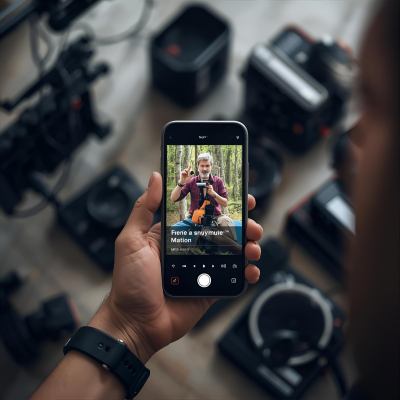
OpenAI’s Sora 2 has exploded across the internet since its release on September 30, quickly becoming one of the most talked-about AI video generator tools ever made. With more than 1 million downloads, this AI video creator has reshaped how people think about visual storytelling — and how easily we can blend reality with fiction.
At its core, Sora 2 functions like a high-end text to video AI system: you type a short prompt, and the model creates a fully realized scene. For many creators, this feels like an evolution of Synthesia AI or other AI video maker tools — but the scale and realism are new. Most early adopters have used it to create comedic skits featuring celebrities in absurd situations. These clips, while often lighthearted, have sparked intense debate about ethics, ownership, and taste.
The most common videos feature deceased celebrities — Michael Jackson, Stephen Hawking, Queen Elizabeth II, Elvis Presley, and Martin Luther King Jr. — placed in bizarre, fictional scenarios. Many are intentionally ridiculous, like imagined robberies or space missions, but others have drawn criticism for being disrespectful or exploiting likenesses without permission. OpenAI has already limited the use of Martin Luther King Jr.’s image, acknowledging that certain depictions crossed ethical lines.
The appeal of Sora 2 — and of free AI video generator tools more broadly — lies in accessibility. Anyone can generate studio-quality visuals on a laptop or phone. Sam Altman described this trend as “fan fiction for video”. People are experimenting with history, personality, and narrative the way writers once experimented with myth. But the novelty of seeing gymnasts or pole vaulters defying the laws of physics fades fast, and with it comes a need for deeper creativity.
Each Sora 2 video carries a visible watermark, designed to show viewers that what they’re seeing was created by an AI video generator. Some have argued that without this watermark, the realism would make it nearly impossible to tell what’s real and what’s synthetic. For now, the illusion holds only briefly — long-form realism still eludes even the most advanced AI video creator systems — but progress is rapid.
Still, watermarking is a technical fix, not a moral one. There are practical safeguards in play. OpenAI says it’s building technical markers, usage limits, and opt-out processes into Sora and its policies; the company has framed these changes as part of launching “responsibly.” But technical mitigations (watermarks, metadata tags, opt-out lists) are only part of a social solution. Watermarks can be cropped or removed, metadata can be stripped, and an opt-out system can miss less organized or historically excluded creators. That means policy design — not just technology — will determine whether the harms are contained. Without clear regulation or an opt-out mechanism for image rights, creators and estates risk losing control over their likenesses. OpenAI has indicated that an opt-out process and potential royalties for copyright holders could be introduced, aligning with similar protections found in platforms like Synthesia AI or Runway.
Creatively, Sora 2 represents a golden age for small creators. It empowers filmmakers, marketers, and educators to experiment visually without the expense of traditional production. A single person can now prototype an entire short film using an AI video maker or AI video generator within minutes. Yet, as with every technological shift, there’s a ceiling: audiences crave authenticity. Could a 100 percent AI celebrity ever truly become popular? Maybe — but only up to a point. There’s still an appetite for authenticity. The most successful creators eventually step into the real world, attend events, or at least reveal some trace of humanity. Purely digital personalities may achieve short-term fame but they hit a glass ceiling. We like our illusions with a pulse.
The real threat doesn’t come from a fictionalized celebrates robbing a KFC, though I find seeing Michael Jackson and Martin Luther King repeatedly carrying this out to be a distasteful portrayal of stereotypes — it’s from subtle manipulation. As AI video creator tools become more sophisticated, there’s potential for disinformation, character defamation, and manufactured evidence to spread faster than truth can catch up. That’s why provenance, verification, and watermarking must evolve in parallel with creativity.
For all its brilliance, Sora 2 reminds us that technological leaps are double-edged. The same text to video AI power that fuels comedy can also fabricate convincing lies. Keeping our grip on reality will depend on how responsibly we use it — and how willing we are to slow down when the magic becomes too real.
Sora 2 isn’t just an AI video generator; it has created a new storytelling ecosystem. Balancing experimentation with ethics — will determine whether it becomes a tool for art, education, and inspiration, rather than misinformation or offense